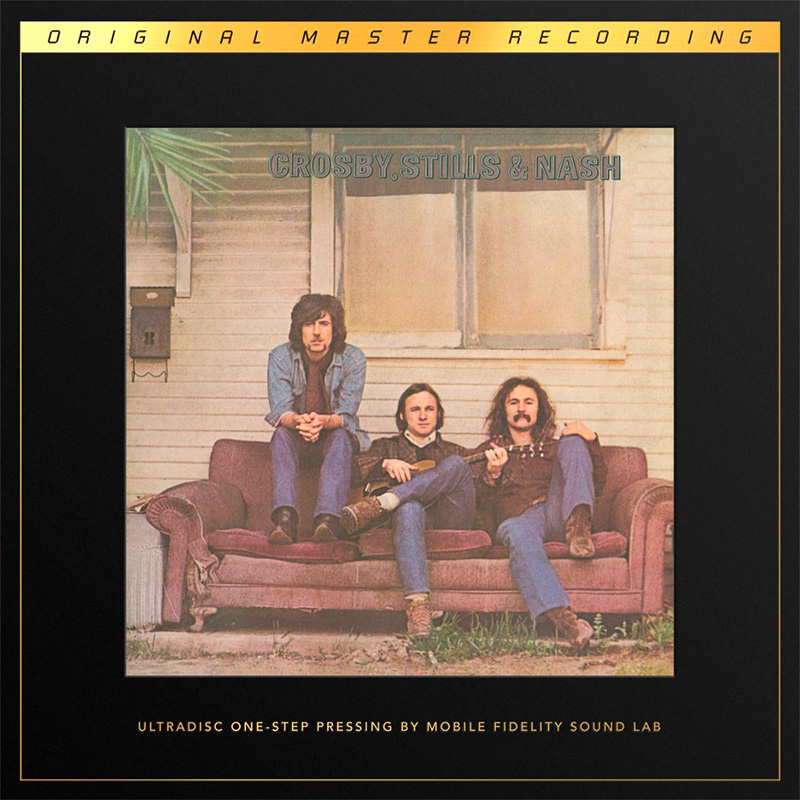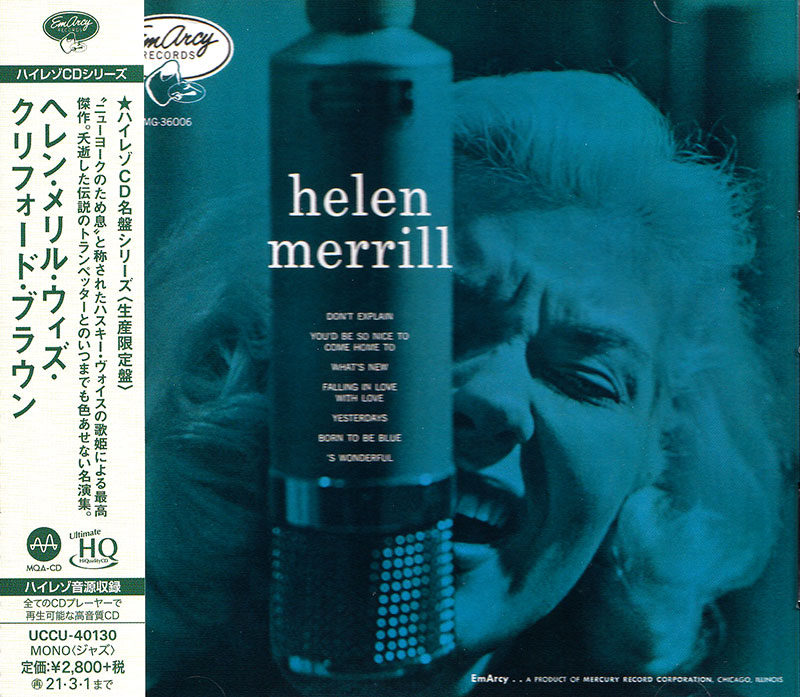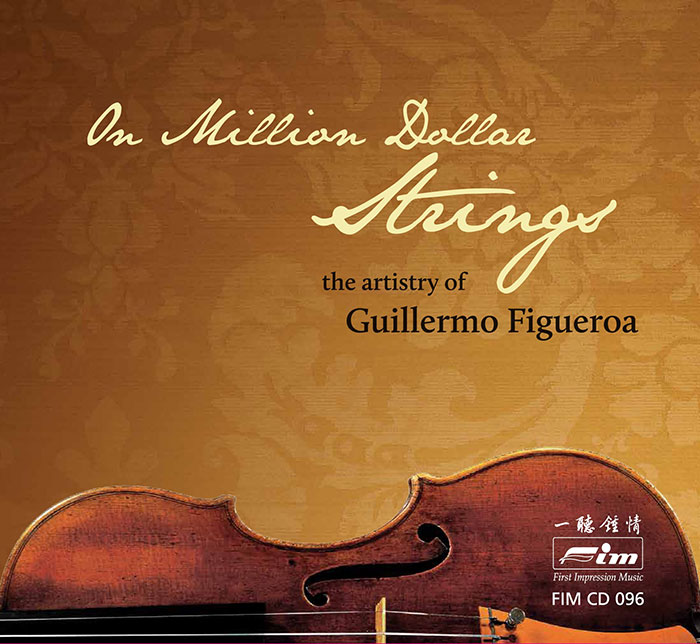Logowanie
OSTATNIE EGZEMPLARZE
Jakość LABORATORYJNA!
ORFF, Gundula Janowitz, Gerhard Stolze, Dietrich-Fischer Dieskau, Deutsche Oper Berlin, Eugen Jochum
Carmina Burana
ESOTERIC - NUMER JEDEN W ŚWIECIE AUDIOFILII I MELOMANÓW - SACD HYBR
Winylowy niezbędnik
ClearAudio
Essence MC
kumulacja zoptymalizowana: najlepsze z najważniejszych i najważniejsze z najlepszych cech przetworników Clearaudio
Direct-To-Disc
PIAZZOLLA, ChamberJam Europe
Tangos del Ángel y del Diablo
Direct-to-Disc ( D2D ) - Numbered Limited Edition
SOUSA, Erich Kunzel, Cincinnati Symphony Orchestra
Sousa and Americana
- 1. Stars and Stripes Forever-march 3.27
- 2. La Reine de la mer-waltzes 5.46
- 3. Gliding Girl Tango 3.42
- 4. The Thunderer-march 2.37
- 5. Myrrha Gavotte 4.35
- 6. Washington Post-march 2.24
- 7. Peaches & Cream-foxtrot 3.26
- 8. High School Cadets-march 2.36
- 9. Waltz from comic opera "Desiree" 4.58
- 10. Prelude to comic opera "El Capitan" 3.05
- 11. Presidential Polonaise 3.54
- 12. Semper Fidelis-march 2.36 Julius Fucik
- 13. Entry of the Gladiators 2.43 Morton Gould
- 14. American Salute 4.22 George Gershwin
- 15. Girl Crazy 5.39 Victor Herbert
- 16. Festival March 6.52
- 17. American Fantasia 9.48
- Cincinnati Symphony Orchestra - orchestra
- Erich Kunzel - conductor
- SOUSA
>>> Większa okładka A <<< The American composer John Philip Sousa (1854-1932) was known as 'the March King', but his other works are worthy of revival. His operetta El Capitan, starring the giant basso De Wolf Hopper, was the hit of 1896 on Broadway and is still occasionally revived on stage. He could be seen as one of the most influential American composers of the early twentieth century. But it is the quickstep marches that endure, composed at a time when the United States was becoming a world power. The son of immigrant parents, he chose to study close to home, busying himself playing violin in pit bands and later in the US Marine band. In 1879 he conducted one of the many companies playing HMS Pinafore and the following year became the conductor of the US Marine band, holding this position until he formed his own band in 1892. Sousa's Band enjoyed phenomenal success, touring the country annually, making four tours of Europe between 1900 and 1905 and in 1910/1911 travelling the world. During World War One Sousa served in the Navy training their band to serve the war effort, but following the war he reformed Sousa's Band keeping up a heavy performing schedule until the Depression forced its disbanding in 1931. He died the following year and was buried in Washington, the city of his birth. Hollywood filmed the story of his life in 1952 (Stars and Stripes Forever), but the accolade of which he probably would have been most proud was his admission in 1973 to the Hall of Fame for Great Americans. This collection opens with his most famous march Stars and Stripes Forever (1897). Inspiration for the piece came to him as he was pacing the deck of the steamer Teutonic following the death of his manager. He wrote: 'I began to sense the rhythmic beat of a band playing within my brain ... Throughout the whole tense voyage, that imaginary band continued to unfold the same themes, echoing and re-echoing the most distinct melody.' He had also been suffering from homesickness whilst in Europe on holiday and had longingly recalled the sight of the American flag fluttering from the flagstaff of the White House. Sousa later explained that the main theme represents the North, the piccolo obbligato the South and the trombone countermelody, the West. Sousa composed a number of waltzes, of which La Reine de la Mer (the Queen of the Sea) was allegedly his favourite. Written in 1886 it was dedicated to Mrs W .C. Whitney, the wife of the Secretary of the Navy. Sousa played this piece as part of his farewell to the US Marine Band in 1892. In 1912 the tango was all the rage in Europe. Sousa's daughter Priscilla apparently gave her father a demonstration of the dance upon her return from Europe - Sousa's reaction was to compose The Gliding Girl Tango. The Thunderer, a march dating from 1889, was dedicated to a fellow freemason at the 24th Triennial Conclave of the Grand Encampment. It has been suggested by a member of Sousa's family that this piece is a tribute to the Times newspaper, also known as 'The Thunderer', but as Sousa had no known link with the paper, this association seems unlikely. The Myrrha Gavotte (1876) stems from the period when Sousa had befriended a diplomat named William Hunter. Hunter kindly gave Sousa work as a violinist in a string quartet and tried to persuade him to take up study in Europe. Sousa dedicated this delightful concert piece to him in return. In 1889 The Washington Post newspaper ran an essay competition for schoolchildren and commissioned a march from Sousa to be played at the awards ceremony in the presence of President Harrison. This two-step quickly became popular throughout Europe and America but Sousa received just $35 for his efforts, whilst predictably his publisher made a fortune. Sousa always liked to be kept abreast of musical fashion: one of his last works was the Peaches and Cream Foxtrot, composed in 1924 and used as an encore piece by the band. The inspiration for the work came after Sousa had watched his granddaughter dance. The High School Cadets march of 1890 is another example of Sousa's inability to judge the pecuniary value of his compositions, again being paid a mere $35 for the piece. He was however spared in this case having to pay for the publication and copyrighting costs as was normally the case for composers as the recipients (the marching corps and teachers of this Washington school) were so delighted with Sousa's efforts that they gladly paid the necessary amount. Sousa was asked by President Arthur to compose a piece to replace Hail to the Chief at official functions and he obliged with two. The first, composed in 1886, was Presidential Polonaise (also known as In Echelon Polonaise) and the second, Semper Fidelis (the motto of the U.S. Marine Corps, meaning 'ever faithful') followed in 1888 (after Arthur's death). The first performance was a spectacular event as an extra complement of trumpets played the 'tune' in unison in front of President Harrison's stand, the resulting applause being led by the President himself. Julius Fucik was born in Prague in 1872. Between 1885 and 1891 he studied under Dvorak among others at the Prague Conservatory. Upon graduating he played the bassoon in the band of the 49th Austro-Hungarian Regiment until 1894 when he played in the orchestra of the German Theatres in Prague and then Zagreb, also playing in the Czech Wind Trio. Between 1897 and 1900 he was bandmaster of the 86th Austro-Hungarian Regiment stationed first in Sarajevo and then in Budapest. It was at this time that he composed his best known work Entry of the Gladiators. Other works composed during this period include some ambitiously scored waltzes. Following another stint as bandmaster (this time in Terezin and Prague) he married, retired and settled in Berlin where he founded a Czech ex-pat orchestra and also a publishing firm Tempo-Verlag. He died of cancer in 1916. Morton Gould (1913-1996) was one of the most successful composers of popular symphonic works of the twentieth century. At the tender age of 21 he was arranger and conductor of a weekly radio programme and soon he was much in demand in the theatre and cinema. He also presented musical education programmes on television. Much of his work such as Derivations, written for Benny Goodman in 1956, was jazzinfluenced, or drew upon American Heritage (for example the ballet Fall River Legend (1947) or the work presented here: American Salute, an orchestral arrangement of 'When Johnny comes marching home', also written in 1947). George Gershwin (1898-1937) also successfully pursued a career in both serious and lighter music with concert works being happily produced alongside musical comedy. In 1930 he and his brother Ira produced one of their most successful shows in Girl Crazy which counted among its stars two young ladies making their debut - Ginger Rogers and Ethel Merman. In the pit at various points of the run appeared Red Nichols, Jack and Charlie Teagarden, Glenn Miller, Benny Goodman, Jimmy Dorsey and Gene Krupa who kept things alive during the interval. The overture, arranged here by Don Rose, opens with 1 got rhythm, Embraceable You and Land of the Gay Caballero before subsiding gracefully into But not for me in its slower middle section. Bronco Busters takes over leading the overture to a boisterous conclusion. The massive success enjoyed by Gilbert and Sullivan in the late 1870s and 1880s led eventually to a reaction against British light opera and a search for home-grown American talent. The first to fit this bill was Victor Herbert, who was actually born in Dublin in 1859 and gained his musical education in Germany. He made a reputation for himself there as a fine cellist before sailing to New York with his young wife in 1886 where they were both engaged by the Metropolitan Opera, she as soloist, he as cellist in the pit. He also joined the faculty of the newly formed National Conservatory of Music shortly before Dvorak was invited to head the school. Between 1898 and 1904 he conducted the Pittsburgh Orchestra and then formed his orchestra specifically to promote light American music. In 1913 he was co-founder of the American Society of Composers, Authors and Publishers (ASCAP). Although famous in his time as a virtuoso cellist and conductor his fame today almost entirely rests with his operettas, superbly written and tuneful, which from the late 1890s until c1920 competed successfully with the best of British and European operetta. Shows still being revived today include Babes in Toyland (1903), Eileen (1917), Mlle Modiste (1905), Naughty Marietta (1910), Sweethearts (1913), Princess Pat (1915) and Wonderland (1905). He also wrote a successful grand opera Natoma (1911) and composed one of the first full-length film scores for The Fail of the Nation (1916). A number of his orchestral works are occasionally revived, the best known of which is probably his charming Suite of Serenades, first performed in the famous Paul Whiteman concert that introduced Rhapsody in Blue. Herbert died just a few months after this concert in May 1924. The two Victor Herbert pieces represented on this disc are Festival March (previously Auditorium Festival March), performed by Herbert and the Pittsburgh Orchestra to celebrate the opening of Chicago's Auditorium Theatre. Listeners will recognise Auld Lang Syne' as the main theme and also pre-echoes of his more famous 'March of the Toys' from Babes in Toyland. The early piece American Fantasy from 1893 completes the programme. This work, published as American Fantasia uses themes from popular American songs such as Foster's 'Old Folks at Home' (Swanee River), 'The Girl I left behind Me', Dan Emmett's 'Dixie' and lastly 'The Star-Spangled Banner'. © 2000 James Murray, Newquay

























